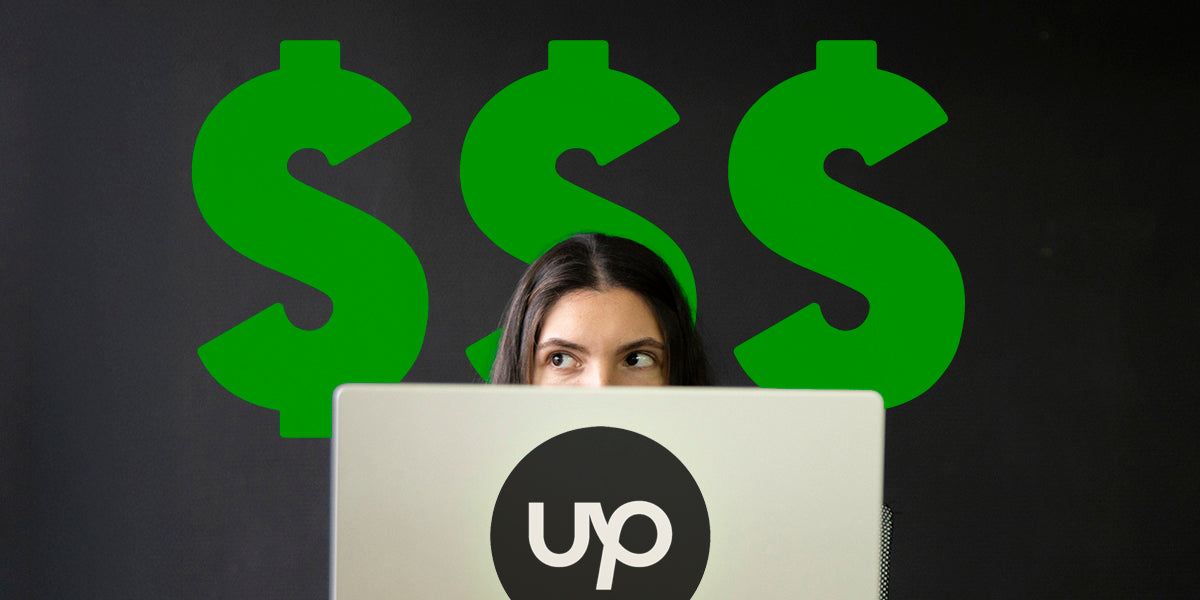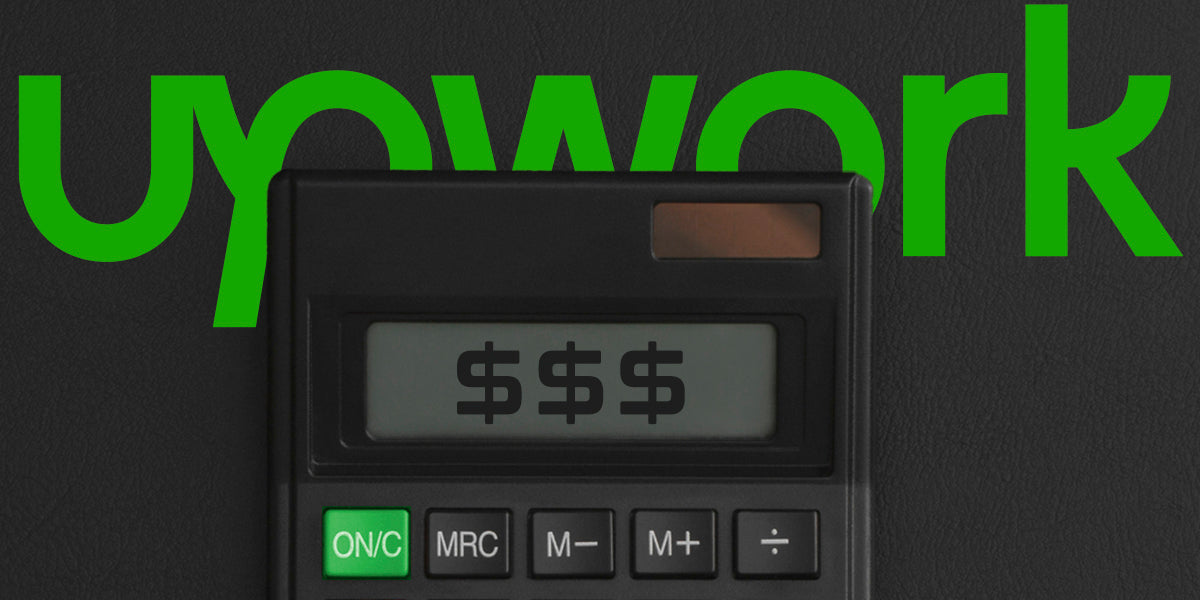Best Freelance Platforms for Finding Jobs
It’s probably the most commonly asked question in the industry: How exactly does one find freelance jobs and land clients? What are the best freelance platforms?
While there are plenty of “manual” methods that are quite effective –and should not be skipped or ignored by any means – such as word of mouth referrals, social media outreach (LinkedIn is usually considered to be an effective social medium) and cold e-mailing/cold calls – there are also a few online tools that can make the task of client acquisition considerably easier.
In this guide, I introduce you to five of the most popular freelance platforms on the internet today: Upwork, Fiverr, Freelancer.com, TopTal and Solid Gigs.

Upwork
Fees: 10% On Earnings, Connect Fees
If you are a follower of Freelancer Files, you probably already know that I've personally earned more on Upwork than any other platform. And, unfortunately, I get receive for promoting it. So trust me when I say, this endorsement is genuine. (Editor's Note: Upwork does have an affiliate program, but it's only for client signups, not freelancer signups.)
Upwork, for the uninitiated is the world's largest freelance marketplace – which means your odds of finding work here are pretty solid. I've personally earned over $600,000 on this platform alone in the last five years.
Sure, it may take a bit of time and persistence to get started, but honestly, that's going to be the case for almost any method on this list. Success rarely happens overnight.
But as far as cost is concerned, Upwork has grown more expensive over the years. At the time of this writing, Upwork charges a flat 10% fee on all freelancer earnings. Upwork also requires the use of a digital currency they called Connects to send proposals, boost proposals, and purchase on site ads like boosted profiles and badges.
There is also a paid Freelancer Plus subscription available for $14.99 per month at the time of this writing, but it is generally not recommended as the biggest benefit is simply receiving more Connects and you're better off buying those as needed.
|
Upwork Pros: Upwork is the largest freelance marketplace on this list so there's ample opportunity on this platform. Upwork is also known for having one of the best mediation and payment protection systems in the industry. I always feel protected when using Upwork. Upwork Cons: It can be difficult to get started on Upwork. Most freelancers report that they have to send dozens of proposals over the course of two or more weeks to land their first job. And it's not free to send proposals. However, as with all freelancer platforms, it does get easier as time goes on. Also, Upwork's customer service as of late, on the freelancer side, has become somewhat lacking as they have largely switched over to AI chatbots. Upwork is also quick to suspend accounts if they suspect you breaking their Terms of Service. So tread carefully – especially when having conversations about deplatforming clients – a big no-no. |

Fiverr
Fees: 20% on Earnings
I'm also a big fan of Fiverr. While I wasn't personally able to find success on Fiverr – and quit pursuing it as a freelancer after Upwork took off – I've heard some amazing success stories about this platform. Like this recently published story about Alexandra Fasulo who not only made $271,000 on Fiverr in 2021 alone but refers to herself as a "Fiverr Millionaire".
Fiverr, like Upwork, also comes with fees. At the time of this writing, with the exclusion of Logo Maker jobs, Fiverr charges a 20% fee on most earnings – which, if you are keeping track, is quite a bit higher than Upwork. I do however find Fiverr's fee structure to be considerably more straight forward as there is no digital currency system or hidden fees.
Fiverr, like Upwork, also has a premium subscription option called Fiverr Pro for $19 per month. The Pro subscription includes advanced analytics, faster payouts, priority customer support (take notes, Upwork) and seller tools like coupons. Fiverr freelancers often highly recommend subscribing to Pro.
And while Fiverr isn't my personal go-to for finding jobs as a freelancer, it has become my to go for hiring other freelancers. I find their entire interface and billing system to be considerably more streamlined than that of Upwork's.
|
Fiverr Pros: On Fiverr, clients come to you, not the other way around. So the bulk of your time, in the beginning, will be focused more on creating gigs rather than applying for jobs. Fiverr also has fewer hidden fees and a way for freelancers to gain access to premium customer support. It is also harder to get scammed on a platform like Fiverr due to the fact they require pre-payment. Fiverr Cons: Like Upwork, it can take a while to gain traction on the platform. In the beginning, freelancers should strive to create gigs for which there is little marketplace competition, at a competitive price. Also, Fiverr takes a hefty 20% fee from all freelancer earnings – the highest fee of any platform on this list. |

Freelancer.com
Fees: 10% on Earnings
Freelancer.com is basically a lower-budget version of Upwork. There aren't quite as many users or jobs available. But it might be worth checking out as there are also fewer people competing for jobs. Freelancer, like Upwork, also charges a flat 10% fee on all earnings (or $5 whichever is greater). Plus, there aren't any hidden fees or complicated digital currency's to have to worry about. So that's a bonus.
However, there are ways to optionally boost or "highlight" or "sponsor" your bids and proposals on Freelancer.com, for a nominal fee.
|
Freelancer.com Pros: Of the standard freelance marketplaces on this list, Freelancer is the most affordable most of the same basic functionality of Upwork. Freelancer.com Cons: Freelancer.com is much smaller than Upwork, meaning there are far fewer jobs available at any given time. |

TopTal
Fees: None
TopTal is another freelance marketplace service, similar to Upwork. But this one is reserved for highly experienced design freelancers. In fact, TopTal claims to only approve 3% of the thousands of freelance applicants they screen monthly. But that selective screening process comes with several upsides like less competition and higher paying clients. So, if you're a highly skilled expert-level freelancer that happens to fall into one of TopTal's featured niches, this one might be worth checking out.
|
TopTal Pros: Because TopTal only allows the accepts the best freelance talent on their platform, there's less competition overall and greater odds that you will score a larger contract and find clients with healthier budgets. There are also 0 fees for freelancers, which is always a plus. Finally, like Upwork and Fiverr, TopTal also handles all project invoicing. TopTal Cons: It can be difficult to get accepted into TopTal. |

SolidGigs
Fees: Subscription starts at $21/month
This one is an interesting alternative for those looking for a totally different model. SolidGigs isn't a freelance marketplace like like Upwork or Fiverr. They are a self-proclaimed lead-generation tool. On SolidGigs, you tell the platform what kinds of work you want, they find potential clients and alert you when they have a good match. The rest is up to you. You communicate directly with the prospective clients, send pitches and ideally, win jobs.
SolidGigs even integrates with many of the above mentioned platforms – including Upwork, and sends potential gigs that fit your preferences directly to your inbox.
There are no percentage-based job fees on SolidGigs. But there is a monthly subscription. It's free to try but membership will cost you $35 per month or $21 per month when paid annually.
|
SolidGigs Pros: SolidGigs offers a subscription based service rather than taking fees or comissions from freelancers. SolidGigs Cons: SolidGigs can be a great way to monitor freelance gigs on a variety of platforms. However, it's essentially a glorified aggregator. If SolidGigs recommends a job to you from a traditional freelance marketplace – you'll still have to pay and fees associated with that marketplace. |






